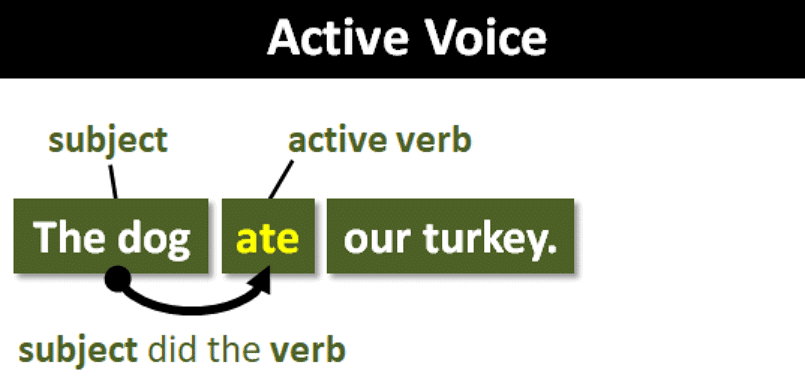Key Notes: Voice | English Grammar Basic - Class 10 PDF Download
Understanding Voice
Voice in grammar refers to the way the action of a verb relates to the participants in a sentence. It indicates whether the subject is performing the action or receiving it.
Consider the following sentences:
(i) Raja loves Reena.
(ii) Reena is loved by Raja.
There is practically no difference in the meanings of the above two sentences. These are two different ways of presenting the same thing. In the first sentence, the subject performs the action, whereas in the second sentence, the subject of the verb is acted upon. It means the subject of the first sentence becomes the object of the verb of the first sentence.
It means the subject of the first sentence becomes the object of the verb of the first sentence.
The voice shows whether the subject performs the action or the subject receives the action.
Kinds of Voice
There are two voices:
(i) Active voice
(ii) Passive voice

1. Active Voice
When the subject of the sentence is the doer or actor, the verb is active and said to be in Active Voice.
Here are some examples:
- Lee ate the pies.
(Lee is the subject of the verb. The subject is doing the action of the verb.) - We play hopscotch.
(We is the subject of the verb. The subject is doing the action of the verb.) - The sharks will attack the cage.
(The sharks is the subject of the verb. The subject is doing the action of the verb.)
2. Passive Voice
When the subject of the sentence is acted upon, the verb is passive and is said to be in Passive Voice.
Here are some examples:
- The pies were eaten by Lee.
(The pies is the subject of the verb. The subject is being acted upon.) - Hopscotch is played by us.
(Hopscotch is the subject of the verb. The subject is being acted upon.) - The cage will be attacked by the sharks.
(The cage is the subject of the verb. The subject is being acted upon.)
Rules for Changing the Voice
1. The object of the active voice is changed into subject of the passive voice.
2. The subject of the active voice is changed into object of the passive voice.
3. According to the subject made in the passive voice, there is the usage of the helping verb.
If it is not the helping verb 'to be', then according to the helping verb present there, a form of 'to be' is taken into usage.
4. Preposition 'by' is used before the object made in the passive.
This (by + object) is also known as (by + agent), which is completely optional.
5. The tense of the verb is not changed. Only its form is changed, i.e. tense of the verb remains the same.
6. Vague subjects, like someone, somebody, everybody, everyone, people, etc. are dropped in the form of a passive voice.
|
20 videos|143 docs|18 tests
|
FAQs on Key Notes: Voice - English Grammar Basic - Class 10
| 1. What is voice in grammar? |  |
| 2. What are the two main kinds of voice? |  |
| 3. How can I change a sentence from active voice to passive voice? |  |
| 4. What are the rules for changing from passive voice to active voice? |  |
| 5. Why is it important to understand the difference between active and passive voice? |  |





















